Related Research Articles
Microsoft Windows is a group of several proprietary graphical operating system families developed and marketed by Microsoft. Each family caters to a certain sector of the computing industry. For instance, Windows NT for consumer and corporate desktops, Windows Server for servers, and Windows IoT for embedded systems. Defunct Windows families include Windows 9x, Windows Mobile, and Windows Phone.
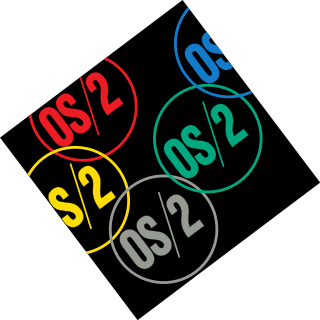
OS/2 is a series of computer operating systems, initially created by Microsoft and IBM under the leadership of IBM software designer Ed Iacobucci. As a result of a feud between the two companies over how to position OS/2 relative to Microsoft's new Windows 3.1 operating environment, the two companies severed the relationship in 1992 and OS/2 development fell to IBM exclusively. The name stands for "Operating System/2", because it was introduced as part of the same generation change release as IBM's "Personal System/2 (PS/2)" line of second-generation personal computers. The first version of OS/2 was released in December 1987 and newer versions were released until December 2001.

Windows XP is a major release of Microsoft's Windows NT operating system. It was released to manufacturing on August 24, 2001, and later to retail on October 25, 2001. It is a direct upgrade to its predecessors, Windows 2000 for high-end and business users and Windows Me for home users, and is available for any devices running Windows NT 4.0, Windows 98, Windows 2000, or Windows Me that meet the new Windows XP system requirements.

Windows Millennium Edition, or Windows Me, often capitalized as Windows ME, is an operating system developed by Microsoft as part of its Windows 9x family of Microsoft Windows operating systems. It was officially codenamed as Millennium. It is the successor to Windows 98, and was released to manufacturing on June 19, 2000, and then to retail on September 14, 2000. It was Microsoft's main operating system for home users until the introduction of its successor Windows XP in October 2001.

CP/M-86 is a discontinued version of the CP/M operating system that Digital Research (DR) made for the Intel 8086 and Intel 8088. The system commands are the same as in CP/M-80. Executable files used the relocatable .CMD file format. Digital Research also produced a multi-user multitasking operating system compatible with CP/M-86, MP/M-86, which later evolved into Concurrent CP/M-86. When an emulator was added to provide PC DOS compatibility, the system was renamed Concurrent DOS, which later became Multiuser DOS, of which REAL/32 is the latest incarnation. The FlexOS, DOS Plus, and DR DOS families of operating systems started as derivations of Concurrent DOS as well.
Star Trek is the code name that was given to a secret prototype project, running a port of Macintosh System 7 and its applications on Intel-compatible x86 personal computers. The project, starting in February 1992, was conceived in collaboration between Apple Computer, who provided the majority of engineers, and Novell, who at the time was one of the leaders of cross-platform file-servers. The plan was that Novell would market the resulting OS as a challenge to Microsoft Windows, but the project was discontinued in 1993 and never released, although components were reused in other projects. The project was named after the Star Trek science fiction franchise with the slogan "To boldly go where no Mac has gone before".

American Megatrends International, LLC, doing business as AMI, is an international hardware and software company, specializing in PC hardware and firmware. The company was founded in 1985 by Pat Sarma and Subramonian Shankar. It is headquartered in Building 800 at 3095 Satellite Boulevard in unincorporated Gwinnett County, Georgia, United States, near the city of Duluth, and in the Atlanta metropolitan area.

The Apple–Intel architecture, or Mactel, is an unofficial name used for Macintosh personal computers developed and manufactured by Apple Inc. that use Intel x86 processors, rather than the PowerPC and Motorola 68000 ("68k") series processors used in their predecessors or the ARM-based Apple silicon SoCs used in their successors. As Apple changed the architecture of its products, they changed the firmware from the Open Firmware used on PowerPC-based Macs to the Intel-designed Extensible Firmware Interface (EFI). With the change in processor architecture to x86, Macs gained the ability to boot into x86-native operating systems, while Intel VT-x brought near-native virtualization with macOS as the host OS.
Microsoft is a multinational computer technology corporation. Microsoft was founded on April 4, 1975, by Bill Gates and Paul Allen in Albuquerque, New Mexico. Its current best-selling products are the Microsoft Windows operating system; Microsoft Office, a suite of productivity software; Xbox, a line of entertainment of games, music, and video; Bing, a line of search engines; and Microsoft Azure, a cloud services platform.
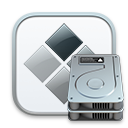
Boot Camp Assistant is a multi boot utility included with Apple Inc.'s macOS that assists users in installing Microsoft Windows operating systems on Intel-based Macintosh computers. The utility guides users through non-destructive disk partitioning of their hard disk drive or solid-state drive and installation of Windows device drivers for the Apple hardware. The utility also installs a Windows Control Panel applet for selecting the default boot operating system.

Windows Easy Transfer was a specialized file-transfer program developed by Microsoft that allowed users of the Windows operating system to transfer personal files and settings from a computer running an earlier version of Windows to a computer running a newer version.

The Blue Screen of Death (BSoD), Blue screen error, Blue Screen, fatal error, or bugcheck, and officially known as a Stop error, is a critical error screen displayed by the Microsoft Windows and ReactOS operating systems in the event of a fatal system error.
Proprietary software is software that, according to the free and open-source software community, grants its creator, publisher, or other rightsholder or rightsholder partner a legal monopoly by modern copyright and intellectual property law to exclude the recipient from freely sharing the software or modifying it, and—in some cases, as is the case with some patent-encumbered and EULA-bound software—from making use of the software on their own, thereby restricting their freedoms.
The User State Migration Tool (USMT) is a command line utility program developed by Microsoft that allows users comfortable with scripting languages to transfer files and settings between Windows PCs. This task is also performed by Windows Easy Transfer, which was designed for general users but then discontinued with the release of Windows 10, where they instead partnered with Laplink. Starting with Windows 8, many settings and data are now being synchronized in cloud services via a Microsoft Account and OneDrive. USMT allows a high-volume, automated deployment of files and settings, and is also useful in migrating user settings and files during OS upgrades. Because USMT has high complexity and a command line interface, there have been several attempts to provide access to its useful functionality by creating GUI wrappers for it. 32-bit to 64-bit migrations are supported, but 64-bit to 32-bit are not.
Laplink PCmover is a PC migration software developed by Laplink Software. Introduced in 2005, as the successor to Laplink, PCmover comes in a variety of versions that provide the ability to move or restore all selected files, folders, settings, user profiles and programs from an old PC to a new one, an old operating system to a new one, or an old hard drive to a new one. Microsoft has partnered with Laplink on multiple occasions and recommends PCmover for automatically moving programs, files and profile setting to new Windows 10 PCs.
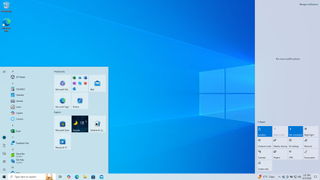
Windows 10 is a major release of Microsoft's Windows NT operating system. It is the direct successor to Windows 8.1, which was released nearly two years earlier. It was released to manufacturing on July 15, 2015, and later to retail on July 29, 2015. Windows 10 was made available for download via MSDN and TechNet, as a free upgrade for retail copies of Windows 8 and Windows 8.1 users via the Windows Store, and to Windows 7 users via Windows Update. Windows 10 receives new builds on an ongoing basis, which are available at no additional cost to users, in addition to additional test builds of Windows 10, which are available to Windows Insiders. Devices in enterprise environments can receive these updates at a slower pace, or use long-term support milestones that only receive critical updates, such as security patches, over their ten-year lifespan of extended support. In June 2021, Microsoft announced that support for Windows 10 editions which are not in the Long-Term Servicing Channel (LTSC) will end on October 14, 2025.
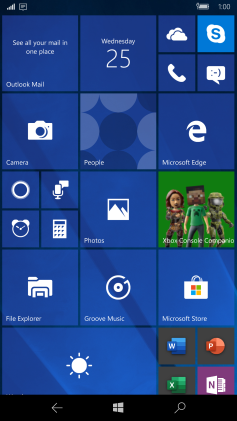
Windows 10 Mobile is a discontinued mobile operating system developed by Microsoft. First released in 2015, it is a successor to Windows Phone 8.1, but was marketed by Microsoft as being an edition of its PC operating system Windows 10.
This is a timeline of Microsoft, a multinational computer technology corporation.

Zorin OS is a Linux distribution based on Ubuntu. It uses a GNOME 3 and XFCE 4 desktop environment by default, although the desktop is heavily customized in order to help users transition from Windows and macOS easily. Wine and PlayOnLinux are supported, allowing users to run compatible Windows software, like Microsoft Office. Its creators maintain three free editions of the operating system, and sell a professional edition.
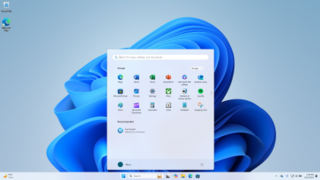
Windows 11 is the latest major release of Microsoft's Windows NT operating system, released on October 5, 2021. It succeeded Windows 10 (2015) and is available for free for any Windows 10 devices that meet the new Windows 11 system requirements.
References
- ↑ Staff (1981–2012). "Definition of: PC migration". PCMag.com. Ziff Davis, Inc. Archived from the original on 10 October 2012. Retrieved 29 May 2012.
- ↑ Eric Krangel (12 February 2009). "Microsoft Terrified Companies Won't Upgrade To Windows 7". Business Insider SAI. Business Insider, Inc. Archived from the original on 15 March 2012. Retrieved 29 May 2012.
- ↑ "Compumate". www.compumate.ae. Retrieved 2023-12-21.
- ↑ Rick Broida (21 October 2009). "Migrate to Windows 7--Slowly". PCWorld. PCWorld Communications, Inc. Archived from the original on 30 April 2012. Retrieved 29 May 2012.
- ↑ JamesHolder; Jeff Schertz (6 August 2008). "Computer Migration problem". Microsoft Exchange Server TechCenter. Microsoft. Archived from the original on 24 February 2012. Retrieved 29 May 2012.
- ↑ Reviewers, Top 10 (July 2015). " "PC Migration Software Review 2015 – Reviews and comparisons". Top Ten. Retrieved August 14, 2015.
{{cite web}}: CS1 maint: numeric names: authors list (link) - ↑ Breeden, John (August 27, 2013). "Life after XP: Zinstall helps tame migration monsters". Government Computing News. Archived from the original on July 14, 2014. Retrieved July 6, 2014.
- ↑ "Move your files, folders, and more". Microsoft . Archived from the original on 2015-09-04. Retrieved 2015-09-08.
- ↑ "Windows Easy Transfer is not available in Windows 10". Microsoft. Archived from the original on 2015-11-08. Retrieved 2015-09-08.